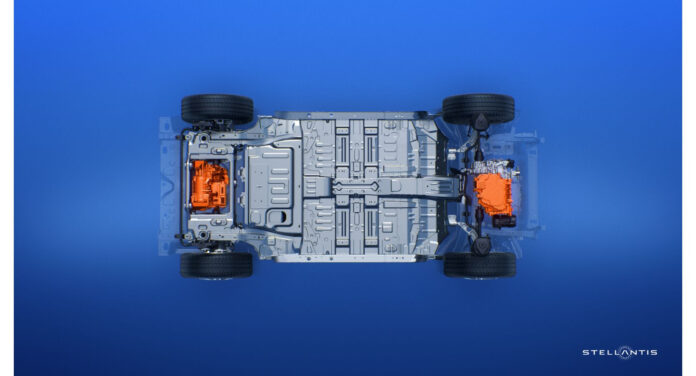The first electric car by Maserati brand is equipped with the forefront 800-V motors by Marelli – all featuring 300 kW of power -, developed in the course of two years and manufactured at Modugno, in Puglia, in a futuristic factory. The motors, one assembled on the front axle and two on the rear one, deliver a maximum installed power of 1200 HP, with power density of 9.2 kW/kg and maximum torque of 1350 Nm. It is a performance that can drive Maserati GranTurismo Folgore to over 300 kilometres/hour.
Marelli motors are made so performing by the manufacturing process: the rotor of the electric motor is subjected to a cryogenic cooling phase, in a chamber with temperature under -200 centigrade degrees to grant the perfect insertion of the shaft into the rotor pack.
Another innovative feature of Puglia factory is the use of an exclusive double process, of which one phase in 3D, for the stator manufacturing. Moreover, they carry out 70 quality tests, of which 41 fully automated, executed on the primary features along the whole manufacturing process.
Hannes Prenn, President and Chief Executive Officer – Vehicle Electrification Division, stated: «We are really proud of giving our technological contribution to a vehicle that marks a memorable time in the history of such an iconic brand like Maserati. Our consolidated technical know-how in the field of electric motors, combined with unceasing attention to innovation and well-rooted manufacturing skills, have represented key factors that have allowed us to develop the best solutions to assure the extraordinary performances of this unique car».
Manufacturing excellence for Marelli motors that equip Maserati GranTurismo Folgore
Supercar Lamborghini: the four-wheel drive makes its debut in full electric mode
Lamborghini has released the first technical info concerning the new 12-cylinder supercar LB744 that will be soon unveiled integrally. The first super-sports hybrid plug-in V12 HPEV (High Performance Electrified Vehicle) will be then ready to make its debut in the year of the brand’s 60th anniversary. The car’s goal is defining a new paradigm in terms of performances, sport character and drive pleasure, also thanks to a new architecture and a powertrain exceeding 1000 HP, combining the power of a brand-new thermal motor with three electric motors and the first dual-clutch gearbox that makes its debut on a 12-cylinder Lamborghini.
Compared to the previous powertrain, V12 has been rotated by 180° and is no longer equipped with the transmission in the front part but instead downstream the engine block, connected with the only rear wheels. The physical transmission shaft is replaced by the lithium 3.8 kWh battery that powers the electrified front axis, rechargeable at 7 kW, taking around half an hour to fill up.
The overall weight is 193 Kg, which includes the integration of a new fundamental component in the vehicle’s hybrid architecture, the rear e-motor, which has a maximum power of 110 kW and maximum torque of 150 Nm.
Placed above the gearbox, the electric unit performs the tasks of starter and generator, besides supplying energy to the two front electric motors through the battery positioned under the tunnel, acting as boost in the full electric drive modality and allowing the zero-emission four-wheel drive, directly acting on the rear axle. The tasks vary depending on the drive modality inserted, through an uncoupling mechanism. For that reason, it is equipped with dedicated synchronizer, which allows the connection to the double-clutch gearbox. When it supports the action of the V12, the e-motor is in the position that is defined P3, with electric motor downstream the gearbox, whereas it shifts to P2 to recharge the battery when stationary or at low speeds and it acts also as starter motor.
Electric powertrains improve the power delivery at low revolutions and can also make the new LB744 a fully electric-traction car, reducing the overall CO2 emissions by 30% versus the Aventador Ultimae.
Nissan X in 1: new approach for the development of electric motors
Recently, Nissan has presented X-in-1, the new approach to the development of electrified powertrains to make Nissan motors 100% electric and e-Power more competitive due to the sharing and modularity of their primary components. The main advantages? More manufacturing efficiency, possibility of using the same production line, lighter and less cumbersome motors and reduction of rare earths to 1% of the weight.
With X-in-1, within 2026 development and manufacturing costs will be decreased by 30% compared to 2019 and the cost of Nissan e-Power models will be equal to the cost of models with standard thermal motor. Besides, the adoption of solid-state batteries starting from 2028 – which will cost the half and will be charged in one third of the time versus current batteries – will grant a further cutting edge to Nissan.
Nissan has implemented a 100% electric powertrain prototype called 3-in-1, consisting of 3 components: motor, inverter and reducer, and a prototype of e-Power called 5-in-1, composed by 5 components: motor, inverter, reducer, generator and multiplier.
«Due to the expertise and the know-how gained in over one decade in the development and production of electrification technologies, we will go on offering innovative high-quality products to our customers, favouring the diffusion of the electric mobility and of e-Power models», stated Toshihiro Hirai, Senior Vice President, manager of the engineering development of electric powertrains and of EV.
With Ambition 2030, Nissan is going to release 27 new electrified models, including 19 new full-electric vehicles, by 2030.
Electrification grows by Citroen
They have recently announced the extension of Citroen C5 Aircross range: the SUV by the French brand now is also available with the new Hybrid 136 motors, based on the Hybrid 48V technology and also on a 48V battery that is recharged during some driving phases and a new ë-DCS6 gearbox that includes a 21-kW electric motor.
The electric synchronous permanent magnet motor has a maximum torque of 55 Nm, a 48V belt-driven starter motor and a new 6-speed ë-DCS6 electrified gearbox with dual clutch and no torque interruption. T
he battery is 48-V lithium ions with an available capacity of 432 Wh. The car is also equipped with a voltage converter, through which part of the electricity produced by the 48-V electric motor is also transformed into 12 V to power the car equipment.
Citroen stated that Hybrid 136 issues 15% of CO2 less than the equivalent non-electrified petrol version.
Stla Medium: the new platform by Stellantis for electrification
Stellantis has recently presented Stla Medium, a global BEV-by-design platform with forefront features. It can offer prolonged autonomy (over 700 km) and integrated flexibility starting from the design, to allow the implementation of a broad variety of vehicles with various traction configurations in the key market segments, C and D, which have represented 35 million sales in 2022, almost the half of the 78.5 million vehicles sold on a global scale in the same year. Currently, Stellantis brands offer 26 models of vehicles in these segments, by using various platforms. The Stla Medium platform allows manufacturing up to 2 million vehicles yearly in various plants headquartered worldwide, this year starting from Europe.
STLA Medium, which uses a 400-V electric architecture, will offer top-level energy efficiency and recharge times in the category and the connectivity to a recharge system. Depending on the application, the consumption will be under 14 kWh for 100 km. The vehicles implemented on Stla Medium will be sold all over the world and they will be available with front or all-wheel drive, with the addition of a second electric propulsion module at the rear, with a power ranging from 160 to 285 kW (BEV).
Alternate or direct current motors?
Obviously, we are not referring to AC-DC, the group of “Highway to Hell” and “Back in Black”. We are instead asking the question whose answer determines the first engineering choice, in other words “alternate current or direct current motor”?
It is worth noticing that this choice simply concerns the motor power supply type, even before opting for a precise technological solution. The power supply type, in fact, determines some important structural characteristics of the actuator and, consequently, influences its use type and the relative performances.
Let us try, then, to give an answer to the question: AC or DC?
Direct current motors
Big, massive and powerful, they are the legacy of an age when the regulation, waiting for the future PWM techniques, was possible only on direct current systems.
In particular, the most performing structural typologies of DC motors provided for the possibility of regulating independently field voltage and current (i.e. of the stator winding when present as replacement of permanent magnets) and armature voltage and current (that is to say of the rotor winding).With configurations like the above-described one (called with independent regulation), it was possible to obtain specific operation curves for each type of application.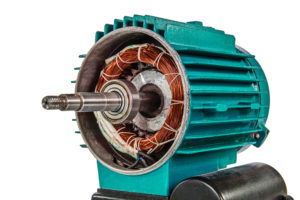
Opportunely regulating, for instance, the voltage and current magnitudes, it was possible to obtain situations in which the torque delivery was the highest in standing starts and then decreased in almost linear manner with the speed rise. These were (and still are) typically the drive requirements. However, beyond applicative situations, we are analysing what are the advantages and the disadvantages connected with the use of this type of motor.
Brushes and sparks
Structurally, all DC motors have the wound rotor; it is clear that, to keep the rotation direction constant, it is necessary to supply armature current so that the magnetic field generated always interacts in the same sense with the magnetic stator field; however, since the rotor rotates on its own shaft, the magnetic interaction between rotor magnetic field (mobile rotary) and stator magnetic field (fixed) inverts the direction every 180°; a DC motor powered in this way, instead of rotating, actually would oscillate between a 0° position and 180° one. Extending the reasoning to each angle fraction, we deduce that the part of rotor winding to be powered at each fraction of angle is different from the one of the previous fraction and from the one of the successive fraction.
In DC motors, therefore, the rotor winding is actually composed by many sections and each of them is powered for a determinate fraction of the round angle.
The rotor shaft of direct current motors is then always equipped with a ring subdivided into longitudinal sectors, insulated one another, each pair of them acts as a contact terminal for a section of the armature winding.
Since the rotor turns, the rotor power supply, which is provided by sliding contacts (brushes), powers then in succession the different sections of the rotor winding, keeping the interaction between the magnetic fields constant and maximum.
Therefore, DC motors imply several circuit switchovers during their rotation; we can even state that the higher is the switchover number (i.e. the more is fractioned the rotor winding), the more the motor offers a constant torque corresponding to the highest that can be supplied. Unfortunately, each switchover requires that brushes open a circuit and immediately close the successive one and this means spark production that, as such, is source of radio-electric disturbances; such disturbances, depending of the motor power and rotation speed, can also be of notable entity and prevent or affect the operation of other contiguous electronic parts. This problematic aspect is then joined by the costs of machine downtimes determined by the necessary periodical maintenance owing to the wear of sliding contacts.
Alternate current: no disturbances
Alternate current motors do not need, in the vast majority of cases, sliding contacts because the rotor is not wound; in this type of actuators, the magnetic field of the mobile part is generated by induction directly by the one of the part fixed on a sort of “virtual” rotor winding, existing in virtue of its structural shape said “squirrel cage”.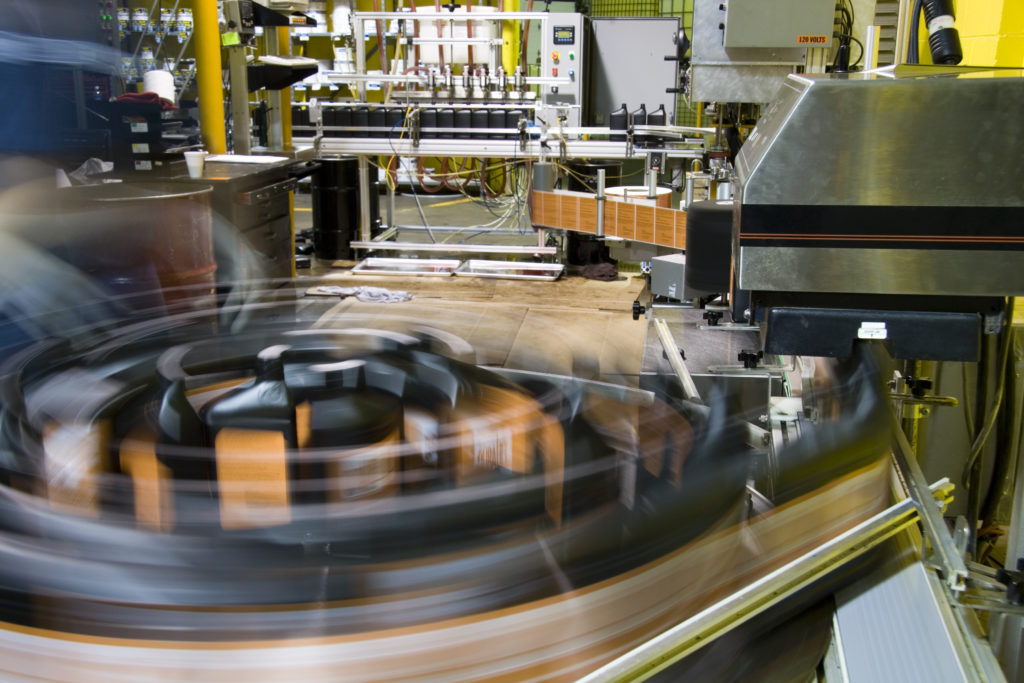
Just for information, in the technical literature these motors are called in several ways, including “induction motors “, “asynchronous motors”, “motors with rotor in short circuit “, as well as, naturally, with explicit references to squirrels.
The absence of brushes and of consequent sparks annuls all maintenance requirements imposed by DC motors, limiting reset interventions to the mere replacement of bearings when worn out. Moreover, being structurally much simpler that DC motors, AC motors provide the not secondary benefit of low investment costs.
On the other hand, this type of motors strongly suffers standing starts, requiring even ten-time higher pickup current than the nominal one. If not managed, this phenomenon induces violent overheating that, in many cases, can be even lethal for the motor. AC motors, used in applicative situations where no frequent stops or slowdowns occur, need, then, opportune cooling extra-ventilation and/or opportune oversizing.
They are not linear elements, and this is an even more important characteristic of AC motors: the torque they provide is not linear function of any significant magnitude (voltage, current, rotation speed and so on.), featuring instead a fluctuating trend in the nominal operating range, with a single peak at a rotation speed approaching the highest permitted. This means that induction motors are affected by serious regulation troubles of the rotation speed and, apart from simple ON-OFF applications (for instance a pump or a conveyor belt), all AC induction motors today find wide use in motion applications only if controlled by opportune electronics (inverter) able to linearize their operation curve, i.e. to make the delivered torque constant.
Brushless is better
Some years ago, somebody had the idea of combining the advantages of DC motors with those of AC motors: capability of maintaining the maximum torque in the entire speed range, unwound rotor and, therefore, absence of sliding contacts, possibility of starts and restarts without overheating damages, user-friendly speed regulation.
The new class of motors, with much pragmatism, has been called “brushless”, that is to say “without brushes”, i.e. without sliding contacts.
The technical and functional characteristics of this class of actuators are notable indeed: almost constant torque in the entire speed range, unwound rotor, possibility of constant speed variation without appreciable torque loss, possibility of frequent stops and restarts.
Since in any motor the rotation occurs due to the interaction between the stator and rotor magnetic fields, if in brushless types the rotor is not wound, it means that it must be in some ways magnetic; the rotor, in fact, is composed by powerful permanent magnets whereas in the stator (powered) it is generated a rotary magnetic field that “drags” the rotor.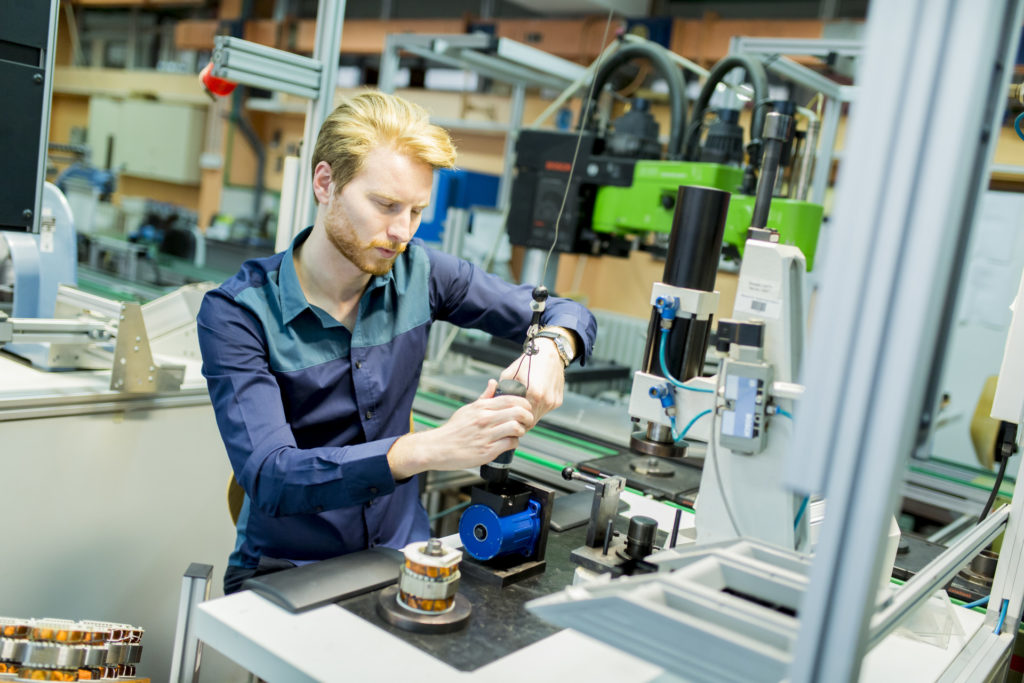
To deliver high torque, the magnetic fields must be very intense; the stator one can be made such by opportune current values whereas for the rotor one is important the quality of the permanent magnets that, to be up to the situation, are made with special materials. This explains one of the reasons for the higher cost of a brushless motor than a standard induction motor.
To achieve a uniform rotation and always the highest possible torque, inside brushless motors is always housed an angular rotor position sensor that provides a feedback to the controller on how to generate the stator magnetic field.
Such sensor can be of discrete type, i.e. able to recognize only a finite number of angular positions, or analogue, able to provide a different piece of information for each recognizable angle according to its resolution.
As for a discrete sensor nothing changes in the entire angle portion included between two distinguishable positions, this type of brushless motor is powered in DC; the motors equipped with analogue sensors are instead powered by sinusoidal alternate current where the progression of the angular position corresponds to an equivalent progression in the supply voltage.
It is evident that the higher resolution allows a better torque supply homogeneity.
Energy efficiency
The motor is an object consisting of two parts: the stator that, precisely “stays”, integral with the fixing surface, and the rotor that, exactly, “rotates” inside the stator.
It is clear for all that accelerating or slowing down an object means to win its inertia; it is then as clear for all that the inertia depends on the mass (to have a confirmation, it is sufficient to try to push first a bicycle and then a truck). Well, in motors with unwound rotor the rotor mass is limited and then with low inertia. All that results in a noteworthy energy saving because all the energy supplied is used to produce torque and not to win mechanical inertias, as it happens instead in DC motors. Not only: low inertia means also high dynamics, i.e. performance in quick speed changes and this, in modern industrial machines, is irremissible.
First in the energy-efficiency ranking are then AC motors with unwound rotor, that is to say asynchronous and brushless. However, if the energy density is at stake, then brushless are the real winners because, in virtue of the most efficient interaction between magnetic fields, with the same power as asynchronous competitors, they have much smaller physical sizes; this, in forefront industrial machines, is almost as irremissible.
Last, but not for this reason negligible, DC motors that, even if energy-eaters, grant high performances in critical sectors like drive and lifting. (Alberto Pivari)
Electric motors and their impact on mechanics
In the past, when motors were the conversation subject, it was almost unavoidable to think of a standard explosion engine, maybe of some old frames of some black and white movies. Today instead, speaking of motors from the industrial point of view certainly means referring to a constant process of technological innovation as well as to an increasingly green production and consumption methodology of goods. We take care of our health and of the one of our planet and we more and more tend to design and build a healthy environment. The atmospheric pollution is one of the main causes of mortality and this phenomenon can be more surveyed in cities because in narrow spaces a higher concentration of CO2 persists.
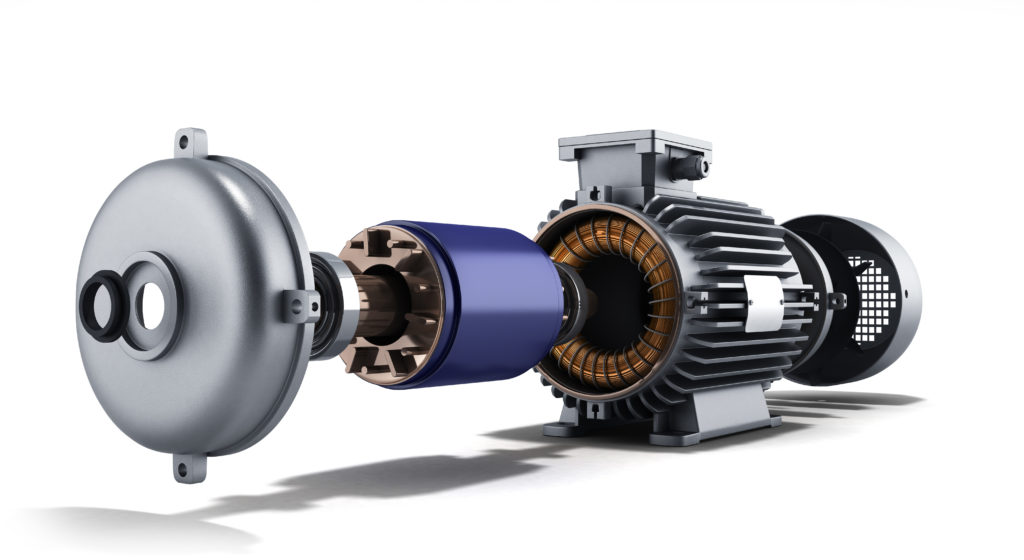
Therefore, we design fully “green” houses and entire cities; an ecologic culture grows and, obviously, the entire automotive industry cannot get away from this phenomenon. As a matter of fact, Toyota, Nissan, Citroen, BMW, Mercedes, Kia, Opel, Fiat, Hyundai and Volkswagen, all of them have a selection of electric models in their portfolio. Volvo, for instance, has announced it is going to modify, starting from 2019, the entire production of electric cars. A phenomenon – the implementation of electric motors in the various industrial fields – that no longer concerns just cars. Today it is possible to drive electric bikes with more and more professional characteristics; motorbikes with exceptional performances, such as CRP or Harley Davidson; to navigate with Riva boats; to compete with an electric single-seater. But not only, the industrial world is gradually getting in touch with it, packaging, food processing machines, machine tools, all those fields where there is the need of doing actions through a motion inside the machine itself. Rising matter, then, and with noteworthy numbers. Let us consider, for instance, once more the car world. Today 2 millions of electric cars are circulating whereas about 600 millions are expected in 2014, against, however, 1 billion of cars that will circulate still using the green petrol and diesel. We will witness a cohabitation among the various propulsion modalities – thermal, electric and hybrid – and an adaptation by the industrial system to what nowadays still seems a not mature system, however already steeply rising. What about small and medium engineering companies that produce mechanical components for the big production field of motors and of motion in general? What will be the repercussions on this manufacturing area? Certainly, we will no longer need certain components in the same quantities as today. Companies and subcontractors must and will have to seize the signs that will increasingly come from the market and from their customers, modify the supplied sectors and sometimes give up activities that have stopped being remunerative and demanded by the various manufacturing fields. New competence and specialization areas, specific training and new figures to be employed in companies will be necessary. Some entrepreneurial realities will look at electric motors with a critical attitude because they will have probably failed their own transformation but any novelty or change always generates new opportunities and it up to us reaping them. The future will be greener than today, complex, competitive and even more variegated, issuing new challenges for our engineering companies.
Stefano Colletta, Technical Director of Subfornitura News-Tecniche Nuove
Marine and industrial segments. Volvo Penta accelerates towards electrified power
With the aim of becoming a driving force in sustainable power solutions, Volvo Penta is going full charge into hybrid and all-electric drivelines, offering electrified solutions in both its marine and industrial segments by 2021.
Volvo Penta has issued a clear statement of intent with the news that by 2021 it will provide electrified power solutions for both its land and sea-based business segments.
“Volvo Penta is embracing the electric transformation and will be at the forefront in delivering compelling business cases to customers using this new technology,” says Björn Ingemanson, president of Volvo Penta. “We will take a full systems supplier approach helping our customers in the transition to the new technology. This will happen application-by-application, on the basis that the business case for switching to electric will differ across our many customer segments.
As part of this increased commitment, Volvo Penta has restructured its organization to accelerate the switch towards electrified power and has committed to an ambitious ramping up of its electrification investment program. An electromobility development-and-test laboratory has also been established at its Swedish headquarters.
As a Tier 1 partner to many leading equipment manufacturers in the marine and industrial segments, Volvo Penta is to further develop the proven electric platforms from the Volvo Group.
While the power outputs and applications of the initial electric systems are being kept confidential for the time being, the company has announced that both hybrid and all-electric solutions will be offered at the outset. Volvo Penta is already field testing early prototypes and system validation is under way.
Partnership for the industrial full electric loader
The protagonists of a successful collaboration in the world of industrial machines are Moog and Dolomitech companies. The broad segment that includes excavation, material handling and transport machines is increasingly protagonist of electrically powered vehicles that join conventional ones. Concerning this, emblematic is the electric industrial loader implemented also thanks to Moog, top player in the supply of high-performance solutions for industrial automation. It is a “full electric” machine with characteristics that allow its use in industrial areas and buildings.
The project was managed by Dolomitech, engineering company headquartered in Trento, and it is characterized by several complexities as it is a “monster” loading machine in the category of industrial electric vehicles.
The machine weighs 50 t, it can lift 3 t and is equipped with an arm that reaches 18 m extension. Its mission is the short-range handling in iron and steel areas and plants, with performances that concern the mechanical, motion and electric aspect. Precisely due to this reason, Moog engineers have designed a state-of-art system, with each loader equipped with 3 EPU, Electro-hydrostatic Motor-Pump Unit, 4 servomotors and 7 customized DR2020 servo-drives.
The successful Dolomitech case proves that Moog technology enables the existence of battery-powered machines, anyway with the same performances as conventional diesel systems.
Upgrading and digitalizing the motor fleet to save energy
Digitalization and automation technologies will be integral part of the efficient management of the whole industrial sector. ABB top player has been a pioneer in this field for decades and it has recently launched a series of digital services connected with the Internet of Things (IoT) for the efficiency of motors, generators and drives.
The concept? Collecting data from processes and equipment to identify possible improvements, so decreasing the company’s energy costs and, consequently, emissions.
Removing the gearbox from the equipment set-up and replacing its functions with a modern, fit-for-purpose alternative coupled directly to the paper machine has proven to be practical and efficient. A gearbox suffers from energy losses during mechanical movements, which means higher energy consumption. When the drive is directly attached to the production machine using the permanent magnet technology, energy consumption is reduced.
The main advantage of this direct drive access is that it is gearless. When there are no gears, the motor speeds are lower. This way, a much longer service life can also be expected from the bearings. In ABB motors these last up to 200,000 hours or approximately 23 years in operation. The system is reliable right from the start and remains this way throughout its lifecycle, reducing electricity consumption and reaching high horsepower at low voltage.
Actually, a gearless direct drive motor system, such as those available from ABB, bring benefits and savings to the user, particularly when it becomes a ‘connected drive’ through digital solutions. These direct drive systems are based on a permanent magnet motor and connect directly to the production equipment
without a gearbox. ABB has developed and delivered this technology to a multitude of pulp and paper mills around the world and several advantages have been identified from seeing direct drive systems in action.





